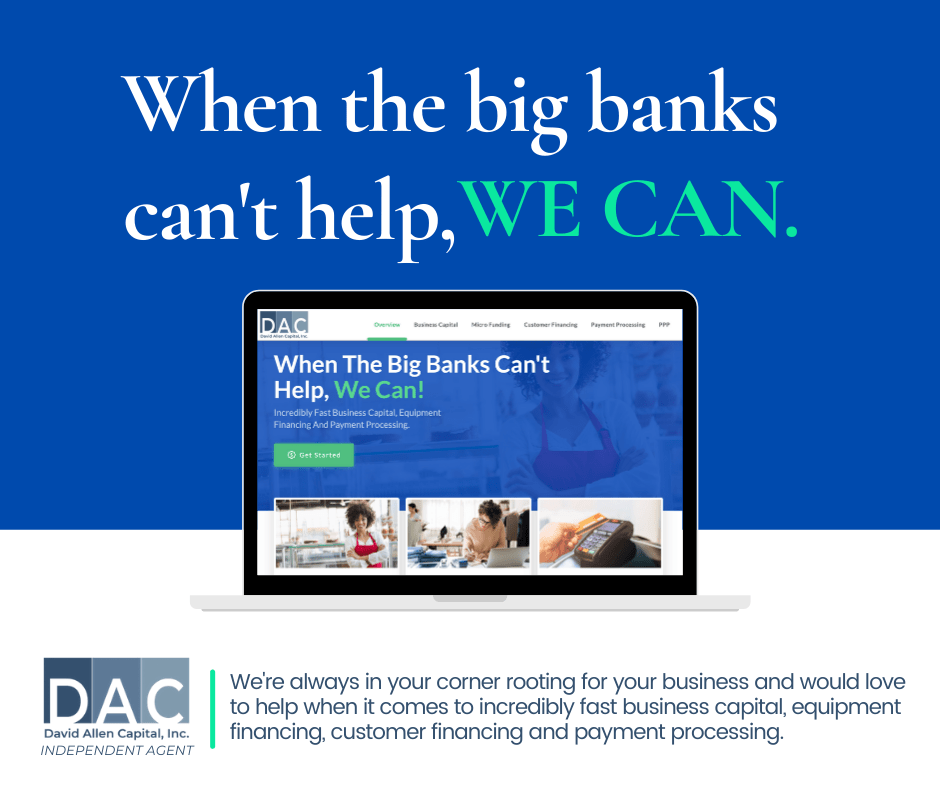Have you ever felt like your business was a treasure chest, but you just couldn’t find the right key to unlock its full potential? You’re not alone! We’ve all been there, scratching our heads and wondering how to secure the capital needed to catapult our businesses to success. So let’s deep dive into the world of business capital:

The Superhero Within
Every business superhero needs to discover their unique powers. That’s why the Find Your Superpower quiz at LJLearn.com is a must-do! Unveil your hidden strengths and potential, and let them guide you to make the best choices for your business.

Funding Fairy Godmothers and Godfathers
If you’ve ever felt like Cinderella, dreaming of a fairy godmother to fund your business, look no further! David Allen Capitalsteps in when banks can’t help, ready to turn your business dreams into reality.

Bootstrapping
Grants
Tax Credits and Incentives
Crowdfunding
Debt Financing
Equity Financing
Revenue-Based Financing
LJ Learn is here to arm you with the knowledge, insights, and strategies needed to conquer the exhilarating world of business finance. By uncovering the ins and outs of both conventional and unconventional funding methods, our guide empowers you to make savvy decisions, fuel your business’s growth, and ultimately achieve your entrepreneurial dreams.
| Growth Stages | Suitable Financing Types |
|---|---|
| Very early stages (Idea Generation, Startup, or Seed Stage) | Bootstrapping, Seed Funding (Equity) |
| Early stages (Development, Launch, Early Growth) | Series A (Equity), Grants, Crowdfunding, Tax Credits/Incentives (depending on specific programs) |
| Early to mid-stages of growth (Early Growth to Established Stage) | Series B (Equity), Revenue-Based Financing |
| Growth and expansion stages | Series C (Equity), Debt Financing |
| Later stages of growth (Maturity, Consolidation, or Late Stage) | Mezzanine Financing, Bridge Financing, Growth Equity, or Initial Public Offering (Equity) |
This table outlines the most suitable types of financing for businesses at various growth stages, from very early stages to later stages of growth. Each financing method has its own set of advantages and considerations, and the best option will depend on the unique needs, industry, and goals of each business. It’s essential to evaluate your specific circumstances and long-term objectives when selecting the most appropriate funding method.
Bootstrapping:
Self-fund your business using personal savings, credit cards, or private loans from friends and family.Bootstrapping is quite common among startups and small businesses, particularly during the early stages of growth. some of the world’s most successful companies, including Apple, Amazon, and Dell, started with little more than the founders’ own savings and sweat equity. According to the Small Business Administration (SBA), “over 80% of small businesses are self-funded.”
This approach allows entrepreneurs to maintain control and ownership over their business while minimizing debt and external obligations. But there are pro’s and con’s worth considering.
The Pro’s and Con’s of Bootstrapping:
Pros of Bootstrapping:
- Full Control: You maintain decision-making power and complete ownership of your business.
- Preservation of Equity: You can avoid giving up equity or diluting ownership to secure funding.
- Fosters Resourcefulness: Limited resources encourage creativity, cost-management, and strategic prioritization.
- Minimal Debt: Relying on personal resources minimizes debt and interest payments, contributing to financial stability.
Cons of Bootstrapping:
- Limited Funds:Personal resources might not be sufficient to fund all business needs, potentially limiting growth.
- Risk to Personal Finances: Using personal savings or credit cards can put your personal finances at risk if the business fails.
- Slower Growth: With limited capital, growth may be slower compared to businesses that secure external funding.
- Stress and Pressure:Bootstrapping can be mentally and emotionally challenging due to the responsibility of self-funding.
Understanding the Time Value of Money and the Implications for Bootstrapping
The time value of money (TVM) is the concept that money available at the present time is worth more than the identical sum in the future due to its potential earning capacity.
When considering the TVM, bootstrapping may not always be the most efficient financing strategy, particularly if capital is readily available to accelerate growth. As explained by the Corporate Finance Institute (CFI), an online financial education platform, relying solely on personal resources could lead to missed opportunities to capitalize on market trends, gain a competitive edge, or scale your business at a faster pace. ( https://corporatefinanceinstitute.com/resources/valuation/time-value-of-money/ )
The Moral of the Story
When it comes to financing your business, understanding the time value of money is crucial. While bootstrapping can offer certain advantages, such as maintaining control and minimizing debt, it’s essential to consider the potential opportunities that may be missed when relying solely on personal resources. By recognizing the importance of the time value of money and weighing the benefits of rapid growth, business owners can make well-informed decisions about funding sources that best align with their company’s unique needs and long-term goals.
Also see: 8 Essential Lessons Every Entrepreneur Should Know To Access Capital
Grants:
Seek out free money from government agencies or non-profit organizations. Securing a grant requires meeting eligibility criteria, showcasing potential impact, outlining clear goals, providing financial details, and submitting a strong proposal that aligns with the grantor’s mission.
Where to find grants:
Government agencies: Federal agencies like the Small Business Administration (SBA), National Science Foundation (NSF), and Department of Agriculture (USDA) offer grants to eligible businesses. Check out websites like Grants.gov to search for federal grants.
State and local governments:Many states and localities offer grants to support economic development and entrepreneurship. Visit your state and local economic development website to learn about available opportunities.
Non-profit organizations: Foundations and other non-profit organizations often provide grants for businesses that align with their mission or focus areas. Use websites like Candid (formerly Foundation Center and Guidestar) or GrantWatch to search for potential funders.
Tax Credits
Governments often use these tools to encourage economic growth, promote innovation, and support specific industries or activities.
Investment Tax Credits:These credits are designed to encourage businesses to invest in certain assets, such as renewable energy technology or research and development activities. The credits can offset a portion of the investment costs and directly reduce a company’s tax liability.
Hiring Incentives: Governments may offer tax credits or other incentives for hiring specific types of employees, like veterans, individuals with disabilities, or those from disadvantaged backgrounds. These incentives can offset payroll costs and help businesses grow their workforce.
Economic Development Incentives:These incentives aim to attract businesses to specific geographic locations. They can include reduced taxes, grants, low-interest loans, or other financial perks for setting up shop in a designated area.
Green Initiatives: As sustainability becomes increasingly important, many jurisdictions offer tax credits and incentives for eco-friendly practices, such as energy-efficient upgrades, reduced carbon emissions, or waste reduction.
Export Development: Some countries provide incentives for businesses that engage in exporting goods or services to international markets. These can include tax breaks, reduced tariffs, or access to specialized financing programs.
While tax credits and incentives can be valuable sources of business capital, it’s essential to consider their specific requirements, potential limitations, and long-term implications. Always consult with a qualified tax professional or financial advisor to ensure these options align with your company’s goals and needs.
Crowdfunding
Harness the power of the masses through platforms like Kickstarter or Indiegogo, offering rewards or equity in return.
Kickstarteris a rewards-based crowdfunding platform that focuses on creative projects, such as films, video games, music, art, design, and technology. With an all-or-nothing funding model, project creators set a funding goal and a deadline, and backers pledge financial support in exchange for rewards or unique experiences. The platform emphasizes creativity and innovation, curating projects to maintain its focus and high quality standards.
Indiegogois a pioneering crowdfunding platform that has transformed the way individuals and organizations fund their creative projects, entrepreneurial ventures, and social causes. Founded in 2008, Indiegogo offers a user-friendly interface and a vast global reach, allowing users to connect with a worldwide audience to raise funds and bring their ideas to life. The platform supports various types of campaigns, including tech innovations, creative pursuits, and not-for-profit initiatives, providing a powerful opportunity for campaigners to engage with backers and achieve their fundraising goals.
GoFundMe:A popular platform for personal causes and charitable donations, GoFundMe allows users to create campaigns and share their stories to raise funds from a global community of donors.
Patreon: Designed for artists, creators, and entrepreneurs, Patreon enables supporters to pledge recurring monthly contributions in exchange for exclusive content, behind-the-scenes access, and other perks.
SeedInvest: A leading equity crowdfunding platform, SeedInvest allows startups and early-stage companies to raise capital from accredited and non-accredited investors in exchange for equity.
StartEngine:Similar to SeedInvest, StartEngine is an equity crowdfunding platform that enables companies to raise funds by offering shares to both accredited and non-accredited investors.
Crowdfunder:Focused on social enterprises and impact investing, Crowdfunder allows businesses to raise capital from a community of impact investors who are interested in supporting companies that generate both financial returns and positive social or environmental outcomes.
Keys to Crowdfunding Success: Insights from Experts
Achieving success in crowdfunding involves more than just launching a campaign and hoping for the best. According to industry experts, the following strategies can greatly enhance your chances of reaching your funding goals:
Craft a Compelling Narrative: Forbes emphasizes the importance of storytelling in crowdfunding campaigns. Share your passion, vision, and the impact your project will have on people’s lives.
Offer Enticing Rewards:Kickstarter suggests creating rewards that are both engaging and relevant to your project. Rewards should provide value and incentivize backers to contribute at different levels.
Set a Realistic Funding Goal: Indiegogo recommends determining the minimum amount needed to bring your project to life and setting your funding goal accordingly. Be transparent about how the funds will be used.
Build an Engaged Community: Entrepreneur.com highlights the value of engaging your personal network and encouraging supporters to spread the word. Actively communicate with your backers and provide regular updates.
Create a Professional Campaign: According to Crowdfunding Insider, a professional-looking campaign with high-quality visuals and well-crafted content instills confidence in potential backers.
By implementing these expert-backed strategies, you can greatly enhance your chances of crowdfunding success, turning your vision into a reality with the support of the crowd.
Equity Financing:
Trade ownership stakes for investment by tapping into venture capitalists, angel investors, or even initial public offerings (IPOs).
In equity financing, when investors receive equity in exchange for their capital, they become partial owners of the company and are entitled to a proportionate share of the company’s profits (dividends) and potential capital gains from the sale of their shares. This arrangement dilutes existing shareholders’ ownership stakes, reducing their control and claim over future profits.
Venture capital is a form of equity financing that provides funding to startups and early-stage companies with high growth potential. Venture capital firms invest in promising businesses in exchange for an ownership stake, with the goal of generating substantial returns when the company achieves a successful exit, such as an acquisition or initial public offering (IPO). Venture capital financing is typically provided in multiple rounds, including seed funding, Series A, Series B, and beyond. Each funding round is intended to support different stages of a company’s growth, from product development and market entry to expansion and consolidation. Venture capital funding offers startups the resources to accelerate their growth and scale their operations, while investors provide strategic guidance and support in addition to capital. This collaborative approach can enable young companies to achieve rapid growth and success in highly competitive markets. However, it is essential for entrepreneurs to consider the implications of relinquishing equity and decision-making control in exchange for venture capital funding.
Venture Capital Funding Rounds
- Pre-Seed Funding: This is the earliest stage of funding, often provided by founders, friends, family, or angel investors to help validate an idea and prepare for the seed stage.
- SeedFunding: Also known as the seed stage, this round aims to finance the initial development and growth of a startup, such as product development, market research, and hiring key employees.
- SeriesA: This round focuses on optimizing the business model and product-market fit, as well as expanding the startup’s customer base and generating revenue.
- SeriesB: In this stage, funding is used to scale operations, expand into new markets, or diversify the product or service offerings.
- SeriesC: This round typically aims to help a company achieve its long-term goals, such as acquiring other businesses, expanding internationally, or preparing for an IPO.
- LaterStageRounds(SeriesD,E,etc.): These rounds provide additional capital for further expansion or to finance strategic initiatives, such as large acquisitions or major product development efforts.
The number and timing of these funding rounds can vary depending on the specific needs and growth trajectory of each startup. Not all companies go through every funding round, as some may achieve profitability or reach an exit event earlier in their life cycle.
Business Incubators and Accelerators: Joining a business incubator or accelerator can provide your startup with mentorship, resources, and potential access to seed funding in exchange for equity.
Here’s a curated list of some of the top business incubators and accelerators that have nurtured and supported numerous successful startups:
Y Combinator: A renowned accelerator based in Silicon Valley, Y Combinator has helped launch over 3,000 startups, including Airbnb, Dropbox, and Stripe.
Techstars:Operating in multiple cities worldwide, Techstars offers a three-month program focusing on mentorship, networking, and fundraising opportunities.
500 Startups: With a global presence, 500 Startups invests in early-stage companies and provides a comprehensive accelerator program.
Plug and Play Tech Center: A leading innovation platform, Plug and Play connects startups with corporate partners and investors across various industries.
MassChallenge:A non-profit organization that supports early-stage startups through equity-free cash prizes, mentoring, and tailored programs.
SOSV:A multi-stage venture capital firm offering multiple accelerator programs focused on hardware, software, biotech, and more.
Berkeley SkyDeck: Based at the University of California, Berkeley, SkyDeck supports startups through various programs, resources, and mentorship opportunities.
Wayra: Telefónica’s global startup accelerator provides access to funding, mentorship, and a strong network of partners and experts.
These incubators and accelerators offer a range of resources, expertise, and connections to help startups scale their businesses and achieve success.
Finding Local Incubators and Accelerators:
To find local business incubators and accelerators, conduct online research, focusing on targeted searches like “business incubators” or “startup accelerators” in your city or region. Check local university resources, local economic development agencies, and professional organizations. Additionally, engage in offline networking by attending startup events, conferences, and meetups to connect with fellow entrepreneurs, investors, and mentors. Joining online communities and social media groups focused on entrepreneurship in your area can also yield valuable resources and connections.
MezzanineFinancing: Mezzanine financing is a hybrid form of financing that combines elements of debt and equity. It typically involves a subordinated debt or preferred equity investment and is often used by companies at a later stage of growth to fund expansion, acquisitions, or other significant projects. Mezzanine financing providers generally expect higher returns than traditional debt lenders but lower returns than pure equity investors. This type of financing is usually structured with flexible repayment options and may include features like warrants, equity kickers, or conversion rights to equity.
BridgeFinancing: Bridge financing is a short-term funding solution designed to help companies bridge the gap between an immediate cash need and an upcoming significant financing round or liquidity event. Bridge financing can take various forms, including convertible debt, short-term loans, or equity investments. This type of financing often has a shorter maturity than other forms of financing and may be used to fund working capital needs, support growth initiatives, or cover expenses during periods of temporary cash flow constraints. Bridge financing is typically structured with the expectation that it will be repaid or converted to equity when the company secures more substantial financing or achieves a liquidity event, such as an IPO or acquisition.
Debt Financing:
Borrow from banks, credit unions, or financial institutions in the form of loans or lines of credit.
Debt financing is a common way for businesses to raise funds for growth or expansion. By borrowing money from banks, credit unions, or other financial institutions, businesses can gain access to capital without diluting ownership or giving up equity. However, it’s important to understand the different types of debt financing available, such as loans, credit, lines of credit, and the key considerations that come with them.
Loans:Common forms of debt financing include secured or unsecuredloans. Secured loans are backed by collateral, while unsecured loans are not.
Credit: Businesses may also opt for credit cards or other forms of revolving credit.
Lines of Credit:Another option is a line of credit, which provides businesses with flexible access to funds.
Vendor Financing: Some vendors may offer favorable financing terms to clients, enabling businesses to acquire essential equipment or supplies while paying for them over time. It never hurts to ask your vendors!
Before pursuing debt financing, it’s crucial to consider factors like interest rates, repayment terms, loan length, and impact on cash flow.
Revenue-Based Financing
Revenue-based financing (RBF) is often considered a hybrid form of financing that shares characteristics with both debt and equity financing.
Like debt financing, RBF involves a loan that must be repaid to the investor. However, unlike traditional debt financing, RBF repayments are tied to the company’s future revenue instead of fixed interest rates or repayment schedules. This makes RBF a more flexible and less risky option for businesses with fluctuating revenue streams or uncertain growth projections.
On the other hand, RBF also shares similarities with equity financing, as investors may receive a share of the company’s revenue until a specified return is achieved, much like dividends paid to shareholders.
In summary, revenue-based financing combines elements of both debt and equity financing, offering businesses a unique financing solution tailored to their specific revenue-generating capabilities.
Harnessing the Power of Leverage
When it comes to securing loans or credit for business growth, you might be surprised to learn that there are multiple ways to leverage your assets. By thinking outside the box and exploring various asset-based financing options, you can unlock new funding opportunities. Some potential assets that can help secure funding include:
Real Estate and Business Equipment: Did you know that these assets can serve as collateral for secured loans? Utilizing property or equipment can provide lenders with added security, increasing your chances of loan approval.
Inventory and Accounts Receivable: You may not have considered this before, but leveraging your inventory or pending customer payments can open doors to specialized financing, such as inventory financing or factoring.
Credit Score and Financial History:A strong credit history and solid financial track record can demonstrate your creditworthiness to lenders, helping you secure better loan terms.
Positive Cash Flow: Maintaining consistent cash flow not only keeps your business running smoothly but also reassures lenders that you’re capable of repaying debts.
Business Plan and Financial Statements:A well-thought-out business plan and transparent financial records can showcase your business’s potential and financial responsibility, making it easier to access funding.
By exploring these diverse asset-based financing options, you can expand your horizons and uncover new funding opportunities to fuel your business’s growth and expansion.
Your Business Adventure Awaits
Remember, your business journey is a thrilling adventure, filled with twists, turns, and unexpected surprises. With the right resources, support, and a touch of humor, you’ll be well-equipped to conquer the capital conundrums and build the business empire of your dreams!
Don’t be a stranger – join the conversation and share your own experiences, tips, or questions in the comments below. Together, we can create a community of empowered entrepreneurs who uplift and inspire each other. Are you ready to embrace the mysteries of business capital and release your inner superhero? Let’s do this!
The Wisdom of the Ages
Who says you have to figure it all out on your own? Dive into the LJLearn.com/resources directory, filled with tips, tricks, and sage advice from those who’ve walked the entrepreneurial path before you. It’s like having a crystal ball, but for business! New resources are being added daily! Join our mailing listfor updates!

